Costa Rican coffee for us, like many, has become a big part of our daily ritual.
Coffee as a Ritual
Coffee is a critical part of most people’s days. The first thing many people think about in the morning is the first cup they’ll have.
Whether that’s over the morning paper, on the beach here in Costa Rica with us, or at the work desk, most people cherish those few moments of their daily cup.
Coffee is an integral part of our lives because it fuels us and opens our eyes to the day ahead. It’s the cornerstone of our morning rituals.
Sometimes we remember that coffee is so much more than jet fuel too.
How many of us love to sig snug in a coffee house, drinking a crafted latte can call to mind the art of coffee. Baristas the world over compete for the best espresso or the best milk foam art.
When an old friend stops by your house, you’re likely to offer a freshly brewed pot while you laugh over memories. When you order dessert after dinner, you order an accompanying cup so you can linger just a bit longer.
Coffee is behind our happy moments. It creates an atmosphere of comfort and peace. It grounds us in the moment, and it prepares us for our next.
And as coffee is on the rise, so is people’s interest in Costa Rican Coffee.
Costa Rican Coffee
Costa Rican coffee is considered to be liquid gold. Coffee drinkers around the world place this popular Central American product on a high pedestal, and deservedly so.
Almost anywhere in the world, you go, you can find gourmet coffee marked somewhere on its bag: “Hecho en Costa Rica.” (Made in Costa Rica.)
So what’s the key to finding a coffee company that jives with your java love? Let’s explore the facts about exactly why the coffee from this tiny but mighty Central American country is so good.
Coffee Climate – Perfect For Costa Rican Coffee
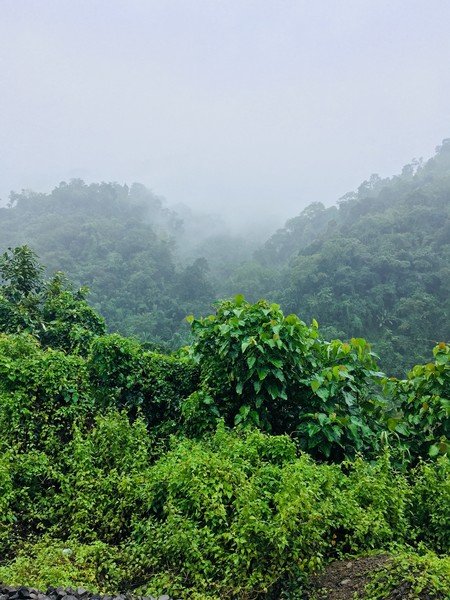 The taste and quality of the coffee are entirely dependent on its growing conditions.
The taste and quality of the coffee are entirely dependent on its growing conditions.
Arabica coffee, which is the species of coffee grown in Costa Rica, requires a few particular combinations of conditions, all of which occur throughout the country. Rainfall, temperature, and altitude can combine in different ways to encourage different qualities out of a coffee bean.
Costa Rica nettles close to the equator, keeping it warm all year long.
Warm weather might be an understatement.
Hotness and humidity are trademarks of the Costa Rican climate. Most countries do not have a wet season and a dry season. Rather most of Costa Rica is humid all year, through rainfall or humidity.
If you’re a visitor, this damp and hot consistency can be frustrating, as you might be wiping sweat from your forehead all day. If you’re a coffee tree, however, you’ll be as happy as can be and never thirsty.
Another benefit of the coffee tree is that the temperature throughout the country is consistent. On average, stays between 70° and 80° Fahrenheit. This stable heat is ideal for coffee, which likes to keep warm and can’t withstand frost.
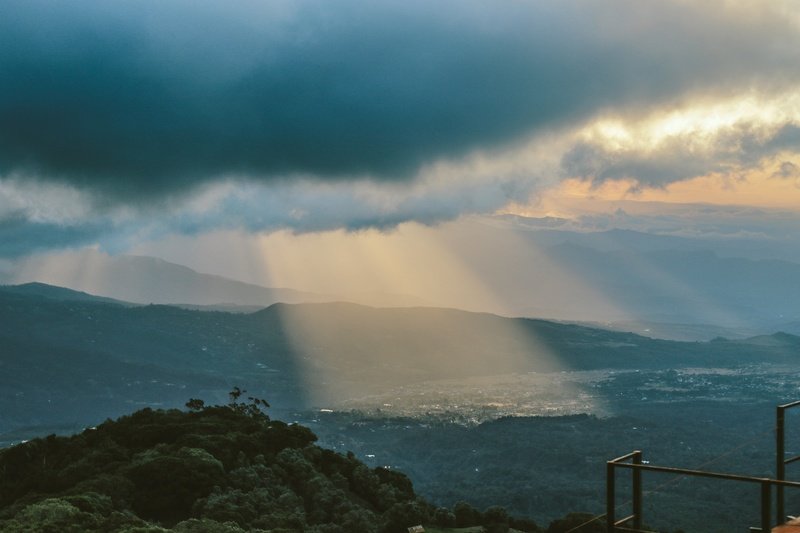
Like a mild climate, altitude is no problem for Costa Rica either. Mountains make up the interior of the country, while the coastal regions- especially the Northern Caribbean coast- are vast plains. The country boasts the beauty of its green mountains and valleys. Many peaks in this small country rise to well over 3,000 meters or about 10,000 feet.
These factors combine to make eight distinct coffee regions distinguished by their differing microclimates.
While Costa Rica is known for being mountainous, vibrantly green, full of healthy and happy plant life, there is still one critical factor that sets it apart from the rest: volcanoes.
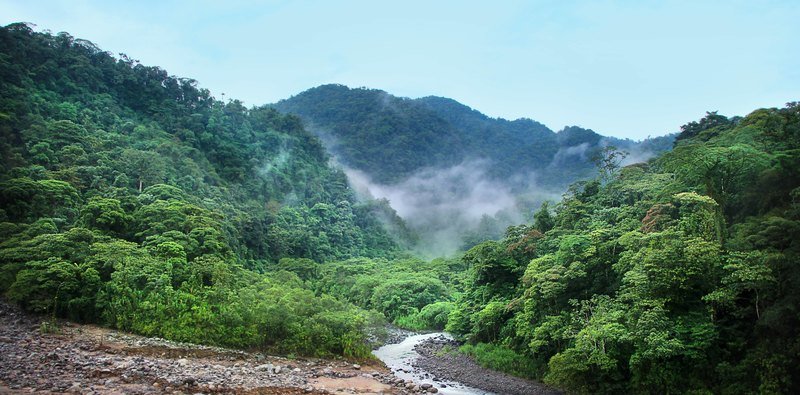
Costa Rican Coffee is an Explosions of Flavor
No, the volcano won’t toast the beans or boil the water, but it will create nutrient-dense soil. Like rainfall, altitude, and temperature, nutrients will help determine a coffee’s flavors and its quality.
Volcanic ash is a time capsule of nutrients, feeding the soil over time while it breaks down. Volcanoes can be immensely damaging, but they feed critical minerals into the land through their ashfall.
For one, nutrient-rich soil means there’s no need for fertilizing or chemical additions- organic, in this case, is most natural and best.
Coffee trees here can grow in the natural earth with no additives. For that reason, the finished product is healthier for the consumer.
Costa Rica has six active volcanoes and 61 dormant or extinct volcanoes for a whopping total of 67 VOLCANOES! For a country of around 51,100 square kilometers- or 32,000 square miles- that’s pretty astounding. For this reason, the soil is ideal for easily influenced plants like coffee trees.

Because of the nutrient-dense soil and leaves high in the warm, sunny air, it’s no surprise that coffee grown on Costa Rican volcano-sides is some of the best in the world.
Coffee and Climate Change
Coffee is hugely dependent on climate, and so climate change is a massive issue for the coffee industry. As weather patterns change with climate change, both rainfall and temperature are affected.
Firstly, droughts are a significant concern for coffee production.
Droughts plague Central America with increasing intensity. Resulting in food shortages spur panic, hunger, and migration. Many people recognize that they will struggle to meet basic food needs because of failing crops. As a result, coffee production will meet a steep decline.
Coffee will soon be a luxury item with a high price tag because the production will not be sustainable.
Secondly, rising temperatures across the globe threaten crop production.
While coffee is a heat-seeking plant in general, its insect partners are less able to withstand temperature changes. These climate changes seriously threaten insects that pollinate coffee plants. Killing enormous numbers of critical pollinators equals a fast decline for coffee (and all other crops for that matter).
Climate change is a hot topic and an important issue. In contracts, we hear lots of talk about the massive impacts it will have on our planet as the day’s tick by without widespread policy change.
Climate change touches every part of our world, from food production to sea levels, and from honey bees to coffee trees.
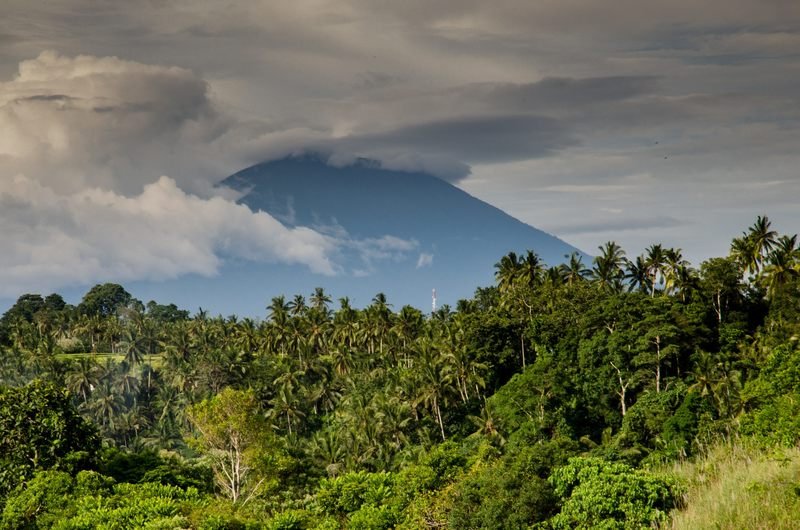
Another critical factor of this is economic implications: so many small farms and their farmers will be left in despair if these industries collapse. While the big industry has its hand in global climate change, there are many small-scale, grassroots organizations that are doing the right thing but will be hurt by the onslaught of environmental changes looming.
One way you can help is by buying from small businesses that promote responsible and sustainable techniques of coffee production.
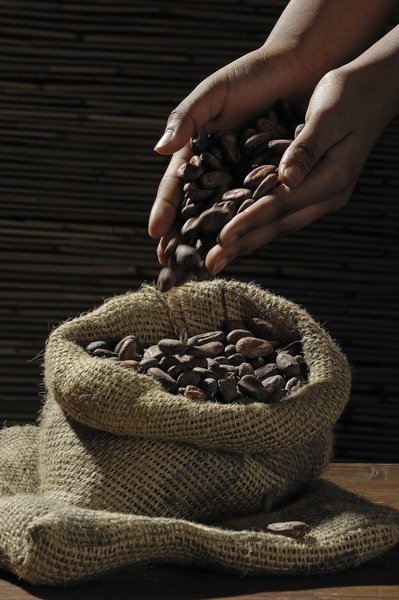 Buying Small is Buying Better
Buying Small is Buying Better
In a country so well known for its coffee, your options can seem endless. When buying, however, it’s important to research who produces sustainably, and what that means for the coffee you’ll drink!
In your search for the perfect cup, we’ve made a list of some of our favorite coffees! To give you variety, this guide selects one coffee per region and explains just what makes it so unique.
Our Guide to the Best Costa Rican Coffee
Tarrazu Coffee
Coffee facts:
- High altitude
- Heavy rainfall
- Heavy bodied coffee
- Exquisite taste that is not sharp
- Subtle chocolate flavors
- Highly acidic
Our favorite local maker: One of our favorite coffees comes from Hacienda La Minta.
This coffee company operates farms throughout Latin America, but their very first was in Costa Rica. The coffee they produced, starting in the 1960s, has been considered some of the best in the world. They only produce one crop per year, ensuring that the trees, the land, and the coffee is provided sustainably and to the highest quality. Additionally, they take care great care of their workers, assisting in retirement savings plans and extensive medical care.
You have to strike at the right time to get this coffee, as it’s only available once per year. Look for Hacienda La Minta’s coffee here!
Central Valley Coffee
 Coffee facts:
Coffee facts:
- Medium-high altitude
- Defined seasons: rainy and dry
- Chocolate notes
- Sweet with notes of honey
Our favorite local maker: Finca Rosa Blanca is nestled in the Central Valley, close to San Jose, and seated on the slope of the Poas and Barva Volcanoes. Organic, free of pesticides, herbicides, fungicides, or general agrochemicals, this coffee is pure from that famous nutrient-rich soil we talked about earlier. Not only do they promote environmental sustainability through their organic practices, but they have also worked planting native trees with community support! These trees provide the shade needed to keep the coffee happy (not to mention that they improve air and soil qualities and encourage bird populations and their migration!). Finca Rosa Blanca does it all: compost, erosion aversion, reducing water waste, etc. We could go on forever.
Check out these environmental allies here!
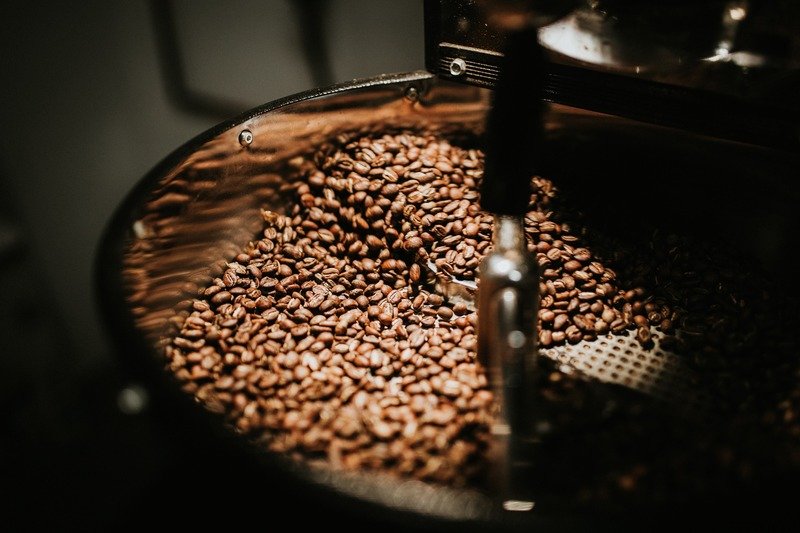
West Valley Coffee
Coffee facts:
- Medium altitudes in warm valleys
- Sweet
- Smooth bodied
- Nutty finish
- Crisp acidity
- Fruity notes of lemon and blueberry are common
- Light roasts will highlight fruity notes, medium-dark roasts highlight chocolate notes
Our favorite local maker: New York City roaster “For Five Coffee Roasters” sources from Monte Crisol’s working cooperative, Coopepalmares. “For Five Roasters” these beans in the city that never sleeps but has a single origin in the West Valley.
For Five’s stylishly bagged coffee boasts lemony and chocolate notes thanks to its light roast. Additionally, they actively support the work of Coopepalmares. This working cooperative provides full benefits, financial support, and medical services to their employees. Also, both For Five and Coopepalmares use sustainable methods and have a variety of environmental efficiency certifications.
Check of For Five Coffee Roaster’s Monte Crisol Costa Rican Coffee roast here!
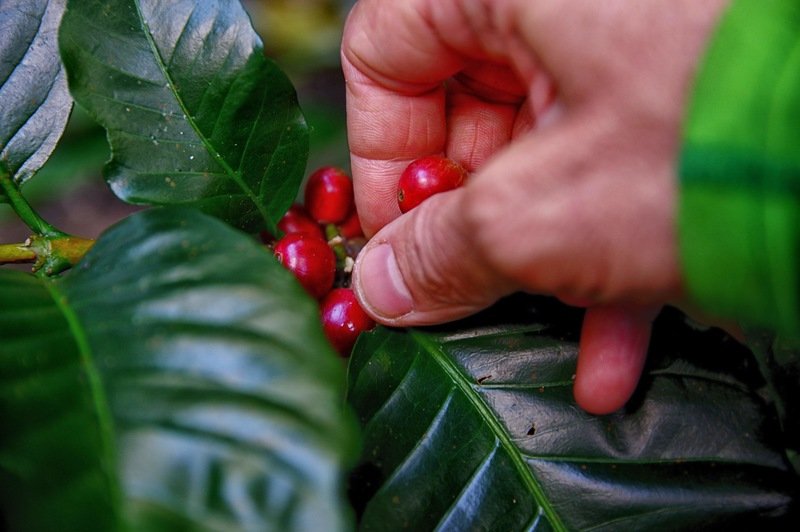
Tres Ríos Coffee
Coffee facts:
- High Altitude
- Balanced flavor
- Medium-full body
- Smooth sweetness
- Notes of honey
- Notes of plum
Our favorite local maker: Tres Milagros, is a 105-hectare farm in the Tres Rios region of Costa Rica. Crushed by urban sprawl, Tres Rios has lost the majority of its coffee farms to real estate development. Once regarded highly in the world of coffee, coffee connoisseurs refer to this region as the “Bordeaux” of Costa Rica. Now, though the coffee is still considered some of the best, Tres Rios has fewer farms than ever. Tres Milagros was salvaged from desolation and replanted, reworked, and reborn. Now it produces, yet again, coffee considered to be some of the most well-balanced in production.
Onyx is a stylish, sleek, well-respected, self-proclaimed “coffee lab” that roasts Tres Milagros’ beans. A method called Red Honey processes these beans.
In this process, coffee beans are de-pulped, but its sticky exterior is salvaged and is fermented as the coffee beans dry.
As for their practices, Tres Milagros dedicates 30% of their land to wild forest, and plants shade trees that add nitrogen to the soil!
Onyx is a great company, too, supporting their suppliers in lots of ways. One of these supportive actions are paying producers upfront in full upon delivery- and at least twice the Fair Trade minimum price, sometimes up to ten times that amount.
Try out this decadent Costa Rican coffee here!!
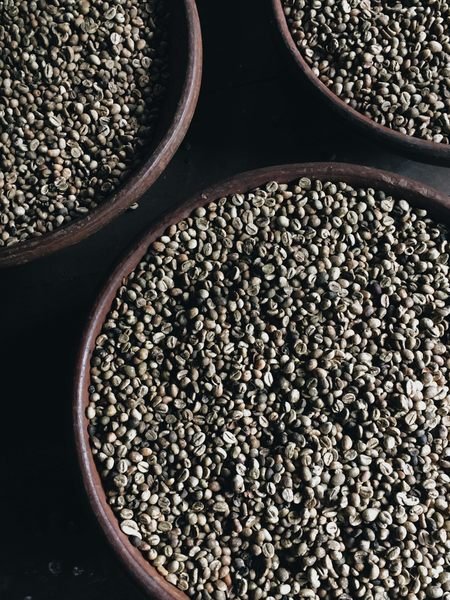
Turrialba Coffee
Coffee facts:
- Soft acidity
- Light body
- Floral notes
- Sugarcane co-planted resulting in notes
Our favorite local maker: Named after its central Turrialba volcano, this region of coffee production prides itself on its nutrient-rich volcanic soils. Our choice for this region is Naturalba. A multi-level project, Naturalba produces coffee in partnership with APOYA, the Organic and Sustainable Agricultural Producers Association. Together they produce high-quality coffee while taking generous care of the earth and their employees. Their company mission is sustainability, and they’ve got a lot to say about it.
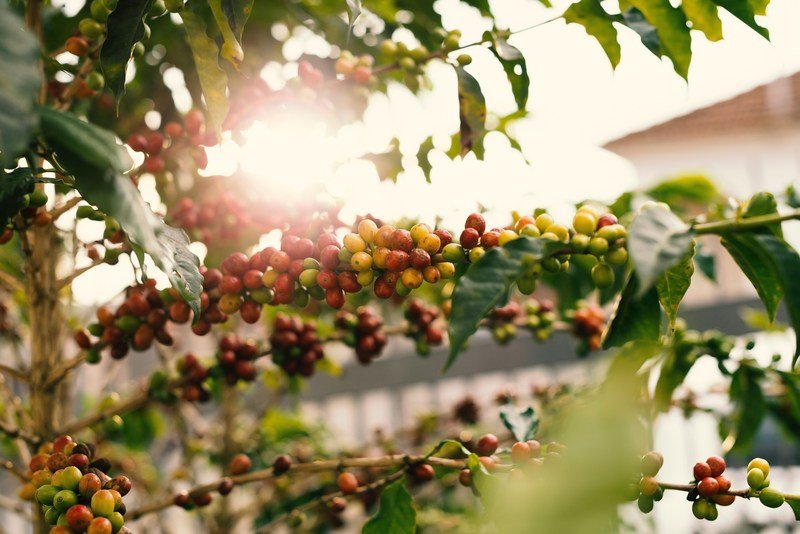
Brunca Coffee
Coffee facts:
- Ranging altitude
- Light-bodied
- Citrus notes
- Notes of jasmine
- Flavors change with altitude
Our favorite local makers: Brunca’s coffee region relies on the Talamanca mountain range for its varied elevation. Much of the coffee is produced on high ranges of the mountainsides. Our choice beans come from a working cooperative called Asociación Alianza de Familias Productoras Orgánicas. This association was put together to do more than just promote organic processes. Its mission is to educate, create areas of ecotourism interest, promote soil health, improve worker quality of life, and respect and nurture the native land.
Their beans are roasted and sold in the US by New York roasters nine05coffee. The coffee beans are unique themselves too, because they’re “honey beans.” Like our choice from the Tres Rios region, these beans are dried with the coffee cherry’s mucilage still on them, creating a sweet and sticky incubator. These beans in particular boast notes of peach and, of course, honey.
Look for nine05coffee’s JavaCoaster here!
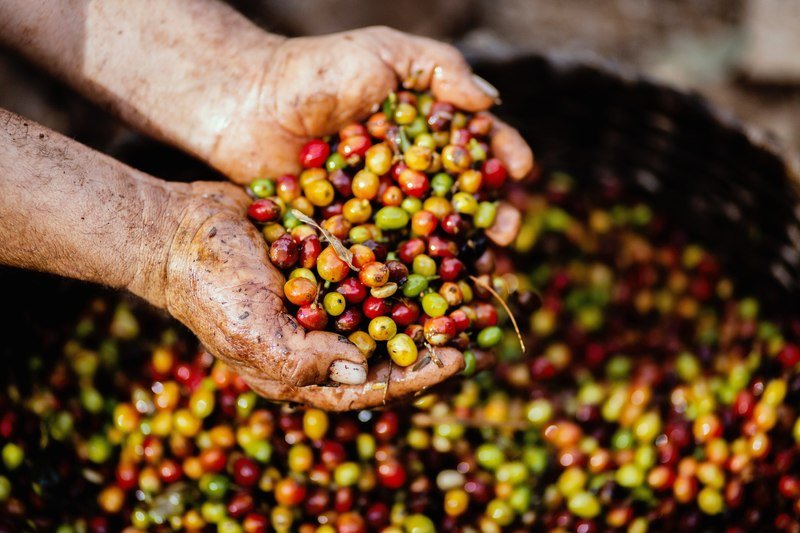
Guanacaste Coffee
Coffee facts:
- Medium altitude
- Light-bodied
- Soft flavors
- Smooth finish
- Sweet notes like sugarcane and caramel
Our favorite local maker: Cafe de Monteverde is a farm dedicated to sustainability and education. Beginning with an association of 12 families in 1989, Monteverde placed harmony at the core of the farm’s practices. They grow, process, dry, and roast their beans, taking care to oversee the sustainability of the whole process. They even run a program focused on sustainable production called LIFE Monteverde.
Orosí Coffee
Coffee facts:
- High altitude
- Balanced acidity
- Light-bodied
- Smooth finish
- Chocolate notes
Our favorite local maker: Our choice for the small region of Orosí is Cafe Cristina. This small-scale farm practices what they preach about avoiding monocultures and embracing natural ecosystems. They consider their coffee trees to be one integral part of the habitat, and so encourage the growth of wildflowers, insects, and birds. They only use organic techniques to produce all of their coffee, happily grown beneath the shade of native trees. Sustainability is vital for Cafe Cristina, where conservation is as important as production.
Buy your bird-friendly beans on their website!
It’s brew time, baby!
 So you know where your Costa Rican Coffee beans come from, and you’ve picked out the right kind for you. Now it’s time to brew that perfect cup.
So you know where your Costa Rican Coffee beans come from, and you’ve picked out the right kind for you. Now it’s time to brew that perfect cup.
To do these bold beans justice, prepare them with care and proper method- The Costa Rican way.
Chorreador:
The chorreador comes from the Spanish verb, chorrear, which means to drip or trickle.
The chorreador means a pour-over method that uses a traditional Costa Rican device. A wooden stand holds a cloth filter through which you can carefully filter medium-ground coffee- note: medium ground! If you want to highlight flavors and notes, you can’t over or under-grind your beans.
Check out this video that shows the process in action:
Costa Rican coffee is considered the best for a reason. It’s grown in an area of the world that couldn’t be better suited for the coffee tree. Next time you’re looking for a gourmet bag of coffee, look over this article and let it guide you to the perfect cup!
If you’re looking for more fun facts and Costa Rican food traditions, check out Blue Osa on Youtube! There you can find recipes from our very own Chef Marie and information on where you can best enjoy that cup of coffee… Right here on the beach in Costa Rica!
Pura Vida!







